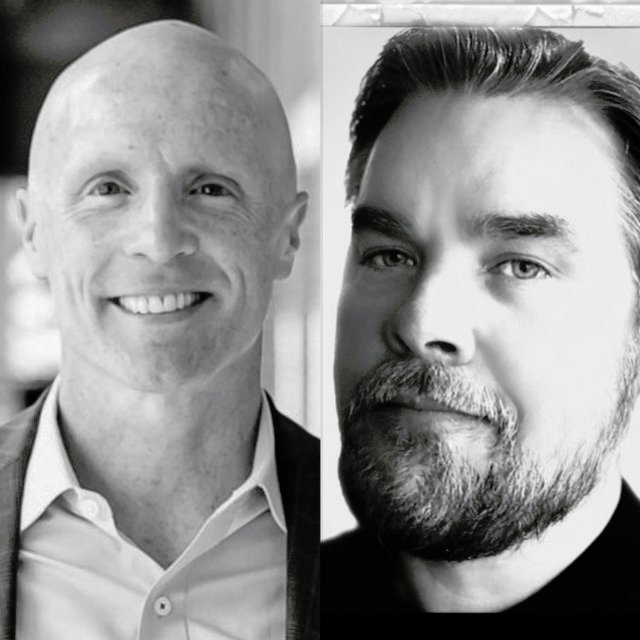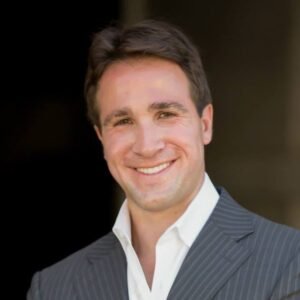I recently spoke to Christopher Bingham and Rory McDonald, authors of the new book In Productive Tensions: How Every Leader Can Tackle Innovation’s Toughest Trade-Offs. Chris is the Philip Hettleman Distinguished Scholar and Professor and Area Chair of Strategy and Entrepreneurship at Kenan-Flagler Business School at the University of North Carolina–Chapel Hill and Rory is the Thai-Hi T. Lee Associate Professor of Business Administration at Harvard Business School.
Adam: Thanks again for taking the time to share your advice. First things first, though, I am sure readers would love to learn more about you. How did you get here? What experiences, failures, setbacks or challenges have been most instrumental to your growth?
Chris: I am the oldest of four children. With limited means I learned early to be creative and proactive in finding work: paper routes, restaurants, lifeguard, and starting my own lawnmowing and t-shirt business. I get excited trying new things. I started competed in snowboarding when the sport was just starting in the last 1980s. It was fun but living in Motel 6 hotels near ski resorts every weekend was not the life for me. I needed to move on. When I turned 19, I decided to serve a two-year mission for my church in Northern Argentina. No one spoke English there. The people were very poor but they were kind and generous and happy. I learned that joy in life has little to do with your environment and everything to do with your focus. When I returned from Argentina I studied accounting in college and started work at Price Waterhouse after graduation. I soon felt the entrepreneurial side of me pulling me towards those types of experiences. I jumped from a 700-person office in Boston to become the General Manager in a 15-person entrepreneurial venture in Las Vegas. I struggled to lead in such a fast-paced dynamic environment with little experience. This prompted me to pursue a MBA/MA and work with McKinsey & Company and Deloitte Consulting. I enjoyed those experiences, but decided to pursue a PhD in strategy, organizations and entrepreneurship at Stanford University. I have been at UNC-Chapel Hill for 14 years and love my job! I have time to be with my wife and six children, learn from exceptionally bright people, and explore my passion for innovation.
Rory: I grew up in Florida and studied engineering at the University of South Florida. Besides a passion for innovation, Chris and I share a religious connection, and like him, I went on a two year mission (to France) before completing my undergraduate degree. The experience of learning a new language and culture was super challenging but also rewarding. After college, I did my MBA at Stanford where two classmates and I founded a company to commercialize a new digital signal-processing (DSP) technology developed by Stanford’s electrical engineering department. Despite raising $1 million in venture capital and winning the university-wide business-plan competition, our company struggled to develop a viable product strategy for DSP applications in noise-suppression headsets. Our investors supported a major pivot to a different market where the company is thriving (no thanks to me!). I was looking for a deeper understanding of the problems that had bedeviled us. I met Chris who was doing his doctorate at Stanford’s Department of Management Science and Engineering, and I completed my doctorate there, too. I’ve been teaching at Harvard for the last 8 years or so and love being a professor. My wife, Anne, and I have been married for almost 20 years. We have four awesome children, and we’re constantly learning and growing through our experiences with them.
Adam: What do you hope readers take away from your new book?
Chris: Leading innovation is tough. Even extraordinary leaders in extraordinary companies fail to innovate repeatedly and reliably. We think it’s because innovation is rife with critical tensions, which if left unaddressed or handled the wrong way can sink a team and organization. We spotlight the eight critical questions that every innovation leader must correctly answer and provide practical guidance on how to harness the tension that underlies each question:
Should you be flexible or disciplined when capturing growth opportunities?
Is it better to differentiate your offering or borrow ideas from competitors?
Do you follow what data is telling you or ignore it?
When do you trust your internal counsel or seek advice from outsiders?
How do you mature a business without making it sluggish and bureaucratic?
How do you make new-to-world innovations comfortably familiar, while still distinct?
Do you spend money on promoting your brand or solving someone’s problem?
How do you keep supporters on board when you inevitably change course?
Until now, there’s been little focus on these tensions, leaving leaders blind to their existence, or left to address them in a problematic way. We reveal solutions that are often simple, requiring small tweaks that don’t require much time or money. We also contend that these solutions can be employed by any member of an organization, no matter how senior or junior. Ultimately, our aim is to help organizations improve their odds of innovation success by tackling different tensions at different times as the context requires and making productive use of them all.
Adam: How can leaders most effectively drive innovation?
Rory: In modern-day organizations, innovation-seeking leaders face tensions. Should they focus on what’s known, basing key decisions on extensive data? Or trust their gut and improvise a way forward? Is it best to count on concrete roadmaps or compelling visions? Emphasize efficiency and risk being rigid, or to embrace flexibility and risk being wishy-washy? Sustainable advantage or temporary wins? Leading innovation is rife with tensions, any of which can cause leaders to stumble. So, which approaches to these tensions are right? The answer is all of the above. We’ve discovered in interactions with hundreds of leaders that the most successful innovators are exceptionally adept at managing such tensions—and that you don’t have to be a genius to be good at it.
Adam: What are key pitfalls and how can leaders avoid them?
Chris: Our research reveals a number of truths. One is that you don’t need to be a brilliant visionary to succeed at innovation. Nor is it just about who came first to market. Rather, in today’s dynamic and complex environment, success is about tackling tensions. Many leaders see such tensions as painful but obligatory tradeoffs, and thus reluctantly choose between two narrowly conceived paths. This inadvertently pushes their organizations backwards, not forward. By contrast, we offer an effective new leadership model by encouraging leaders to see tensions as productive —something that can help and be harnessed as leaders seek new opportunities for growth and innovation—now and in the future. The model we offer simplifies challenges associated with creating new products, services, businesses, and markets. Our message isn’t to work harder; the leaders we have met are already extraordinarily hard-working. It’s to work smarter by addressing innovation’s inevitable tensions in the right way: by anticipating the tensions that will arise and facing them head-on, thus reducing the risk of having to halt innovation efforts and better positioning the organization to overcome complications.
Adam: What do you believe are the defining qualities of an effective leader?
Rory:
Humility. How well do you actively seek out and incorporate feedback about how to improve?
Synthesis. How well are you able to make sense of disparate and even conflicting points of view?
Hard work. How well are you able to push beyond the fear and fatigue that would make others quit?
Adam: How can leaders and aspiring leaders take their leadership skills to the next level?
Chris: Keep practicing and keep trying. We love the quote by Emerson, “that which we persist in doing becomes easier over time, not that the nature of the thing has changed, but that our ability to do has increased.”
Adam: What are your three best tips applicable to entrepreneurs, executives and civic leaders?
Rory: To lead change and innovation in any context:
Start small. Starting small helps you assess causality when early mistakes occur. It also helps avoid those mistakes being catastrophic
Make it simple. It your plan is not simple it will not be remembered and if it is not remembered it will not be implemented
Give it time. All good things come from working and waiting.
Adam: What is your best advice on building, leading and managing teams?
Chris: Remember the law of anatomy: we have two eyes, two ears and one mouth and we should use them in that proportion when building, leading and managing teams
Adam: What is the single best piece of advice you have ever received?
Rory: Don’t run with scissors!
Adam: Is there anything else you would like to share?
Chris: The goal of management is to help people become better leaders. We believe our ideas can assist in this quest, whether you are leading in a large organization, a tiny start-up, or local non-profit. Thank you for your time.









